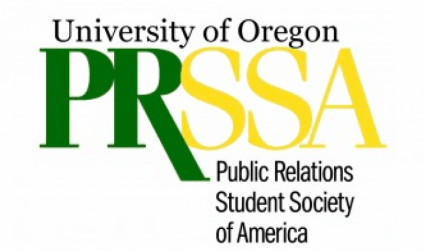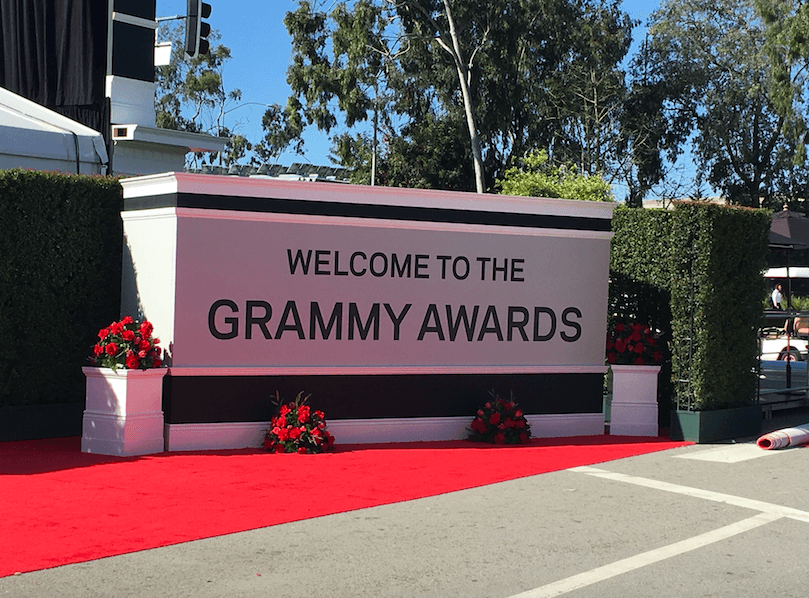By Talia Smith
On the same premises where Adele broke her award in half, where Beyoncé’s performance slayed and where Bruno Mars paid tribute to Prince, I was fortunate enough to be behind the scenes learning about the role of a publicist.
In my last blog post, I talked about the lead-up to working the 59th Annual Grammy Awards with Sugar Mountain PR (SMPR). Five of our clients at SMPR were nominated for Grammys in the children’s category. Now that it’s all over, I thought I’d talk about what it was like being there.
I arrived at the L.A. Convention Center around 11 a.m. on Sunday, Feb. 12. The children’s category was announced during the pre-telecast which airs online in the afternoon. I was told to meet our clients on the red carpet, which I realized was harder to find than I thought, despite it being bright red.
Security guards stood by the entrance checking the credentials hanging around my neck. I gained access to three more checkpoints until I reached the last one where I was directed into a narrow tunnel of black curtains. When I popped out on the other side, I saw the red carpet being vacuumed and a large sign that read “Welcome to the Grammy Awards.”
I breathed a sigh of relief because I knew I was in the right spot. I indulged in a few selfies as I waited for SMPR owner, Beth Blenz-Clucas; publicist, KC Mancebo, and our clients to arrive. KC, who also represents acts like Dave Grohl and Coldplay, offered to let me shadow her for the day, since my boss, Beth, had tickets to the actual Grammy show.
When the nominated musicians arrived, we waited in line until the red carpet media tent opened. Beth and KC told me about their plan to pitch the media inside. Our pitching points were 1) we have access to all of the nominees in the children’s category, 2) they’re all independent artists, and 3) they’re friends.
When the entrance to the media tent opened, the artists and their teams poured in. To my left, I saw a sleek backdrop with the Grammy logo stretching the entire length of the tent. To my right, I saw barricades stretching the entire other side of the tent with journalists, photographers and media people standing behind. Beth and KC divided and conquered as they pitched the different outlets, securing interviews with Pop Sugar and Grammy.com. I was responsible for rounding up the artists and bringing them to the correct interview locations.
After the artists wrapped up their interviews and completed their photographed walk down the red carpet, the parade led to the Microsoft Theater where the Grammy winners were to be announced. Beth accompanied her clients into the theater while KC brought me to the publicist lounge.
The lounge had a large TV surrounded by tables and chairs occupied by publicists with their laptops open. After each winner was announced, different publicists would jump out of their chairs cheering for their client, receiving claps from others in the room as if to say, Congratulations! We all know how hard you worked to make this happen.
When it came time for the children’s category to be announced, KC and I moved to the table directly in front of the TV, staring intensely. The name of each nominated children’s artist was read followed by, “…and the Grammy goes to Secret Agent 23 Skidoo.” The hip-hop children’s group won. We saw the band accept their award and give a speech. KC informed me that they would be coming up the escalator to the lounge soon.
We greeted and congratulated the band when they arrived, then brought them to their photography studio, where the classic Grammy photos with the gray backdrop were taken, and then to the press room to answer questions.
As we all made it out of the press room, we were welcomed into the winner’s lounge. KC, Beth and I clinked a glass of champagne because our work for the day was over. Although I was finished for the day, I still stuck around to watch the major celebrities arrive on the red carpet that evening and watch the live show from the lounge.
The important role of a publicist became even more apparent to me. Beth and KC did not miss a beat when offering their clients instructions, advice and a plan to navigate the media on the red carpet and in the press room. To me, it seemed like publicists are the bridge that connects the talent to the media, making sure the interaction goes as smoothly and as advantageously as possible.





